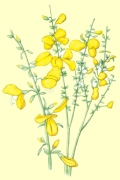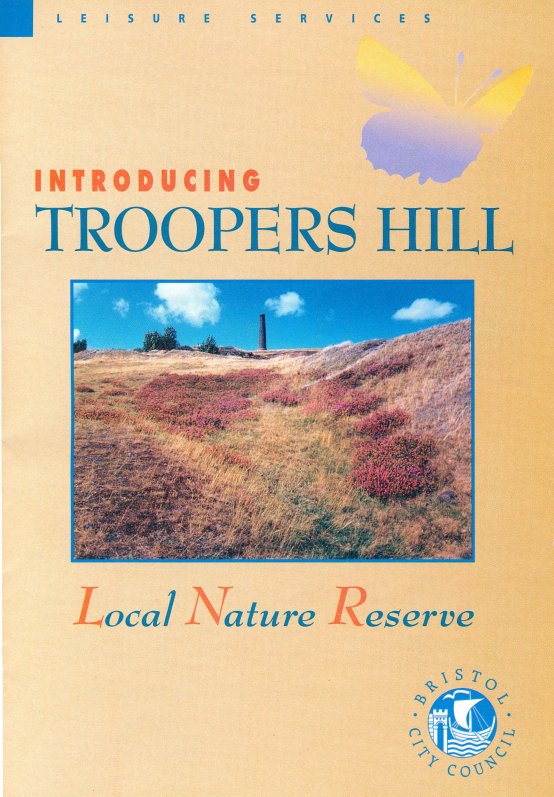 Purchase & Declaration
Purchase & Declaration
Troopers Hill in St George, East Bristol, was purchased by Bristol City Council on 14th September 1956.
The Hill was declared as a Local Nature Reserve (LNR) on 22nd June 1995 (copy of public notice) in recognition of the wide range of wildlife present on the hill and its importance as a unique habitat in the Bristol area due to the presence of acidic soils.
The designation followed the implementation of a management plan for the site in 1992 and some earlier 'Action Days' in the woodland. A leaflet about the Hill was produced around the time of its designation.
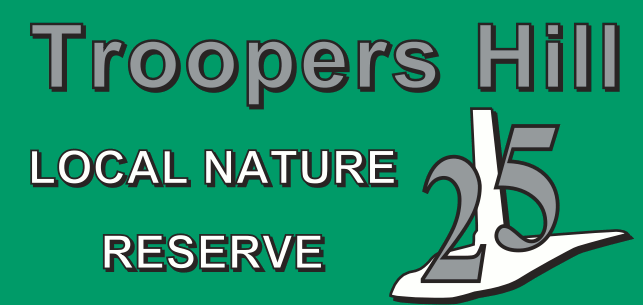 Celebrating 25 Years
Celebrating 25 Years
In 2020, to celebrate the Hill's first 25 years as a Local Nature Reserve we flew a special flag at the Greendown entrance and ran an art competition. Unfortunately our planned celebration picnic was cancelled due to Covid-19 along with most of our other events during the year.
Other Designations
The importance of Troopers Hill as a geological site was officially recognised in April 2010 when Troopers Hill was designated as a Regionally Important Geological and Geomorphological Site (RIGS) these are now also known as Local Geological Sites.
 The site is also important for its industrial history, particularly the two chimneys.
The site is also important for its industrial history, particularly the two chimneys.
Troopers Hill is a good place to visit for star watching and has now been designated as a Dark Sky Discovery Site
www.troopers-hill.org.uk/DarkSky
Size & Height
The Local Nature Reserve covers 8.33 Ha (20.6 acres). Taken together with the adjacent woodland and field there is just over 15 Ha (37 acres) of public open space.
From the lowest entrance on Troopers Hill Road to the top of the Hill is a rise of 190 ft (58 m) but there is relatively level access from the residential streets adjacent to Troopers Hill Field.
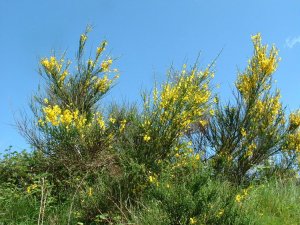 Importance for Wildlife
Importance for Wildlife
The importance of the Hill for wildlife is mostly due to the high number of rare invertebrates that live there, particularly mining bees and bee flies. It is also one of the best sites in Bristol for grassland fungi such as waxcaps.
While there is no threat to Troopers Hill from development the heathland and grassland does need protection from the spread of the adjacent scrub and woodland. If you would like to help us look after this unique site please join us at one of our regular Conservation Work Parties.

Wildlife Corridor
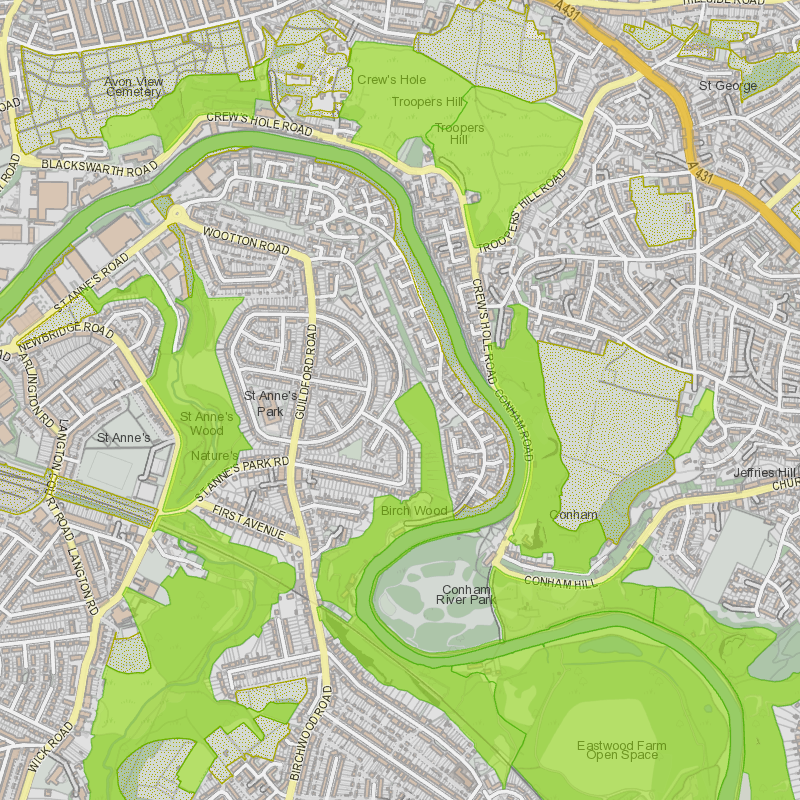 Troopers Hill LNR and the adjacent Troopers Hill Woods form part of an important corridor along the valley of the River Avon that brings wildlife into the city.
Troopers Hill LNR and the adjacent Troopers Hill Woods form part of an important corridor along the valley of the River Avon that brings wildlife into the city.
Both sites are designated as 'Sites of Nature Conservation Interest' (SNCI) - shown in green on this map. This designation gives a degree of protection from development.
Tree Forum Aerial Images of Troopers Hill & Woodland 1999 - 2020
Moving west, the area between Lamb Hill and Strawberry Lane is designated as part of a wildlife corridor.
Next to this is 'Blackswarth Road Wood' which is another SNCI between Avon View Cemetery and the river. This wood is privately owned and there is no public access.
When Blackswarth Road Wood was put up for sale by auction in the summer of 2023 a crowdfunder to buy it was launched by a local charity. Unfortunately, while the funding target was reached, the charity was outbid at the auction.
In March 2024 a Woodland Tree Preservation Order was applied to Blackswarth Road Wood to give it additional legal protection - map showing area covered by the order.
Following the river bank to the south & east of Troopers Hill, the woodland west of Dundridge Park connects to Avon Valley Woodlands LNR which borders the river out to the open countryside beyond Hanham Weir.
The Roe Deer that are sometimes seen on Troopers Hill move along this wildlife corridor and have also been seen swimming across the river. It is also important for other mammals, birds and bats.

Visit Bristol's other Local Nature Reserves
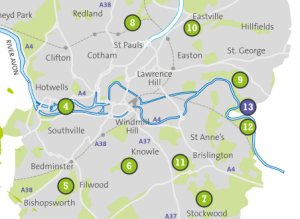 Troopers Hill is one of thirteen Local Nature Reserves in Bristol.
Troopers Hill is one of thirteen Local Nature Reserves in Bristol.
Lawrence Weston Moor & Stockwood Open Space were also declared on 22nd June 1995 - Troopers Hill being No 3 in alphabetical order.
Royate Hill was designated by Avon County Council, in 1996.
Badock's Wood, Eastwood Farm & Manor Woods Valley were designated on 4th Dec 2007; as part of the Wildspace! project, these were BCC LNRs Nos 4, 5 & 6.
Callington Rd was designated on 1st October 2009.
Avon New Cut, Lamplighters Marsh, Narroways & The Northern Slopes were then designated in 2015 as part of the Wild City Project, to bring the total to the 12 described in this 2015 leaflet.
The latest addition is Old Sneed Park which was declared as a Local Nature Reserve on 7th April 2020.
 Purchase & Declaration
Purchase & Declaration Celebrating 25 Years
Celebrating 25 Years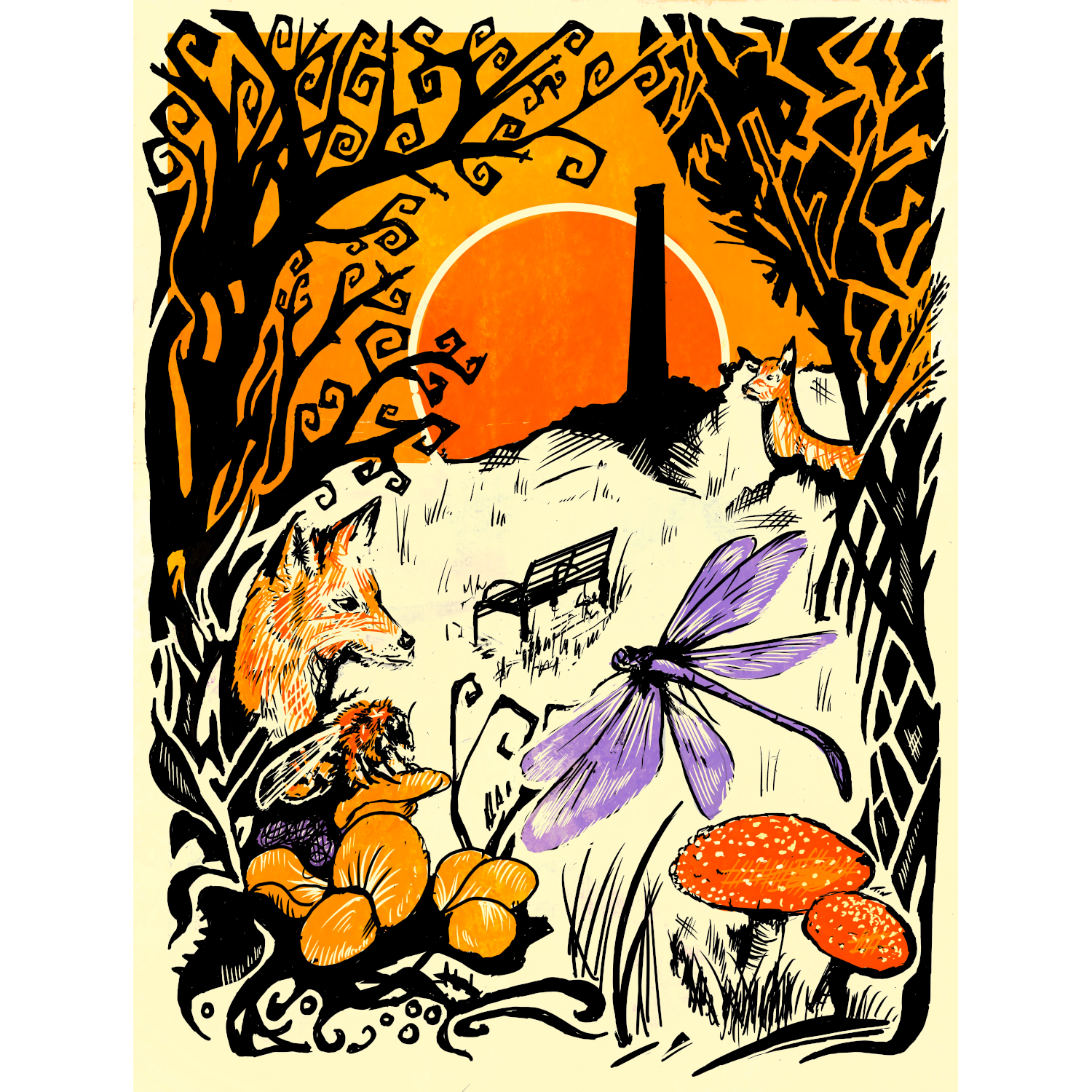
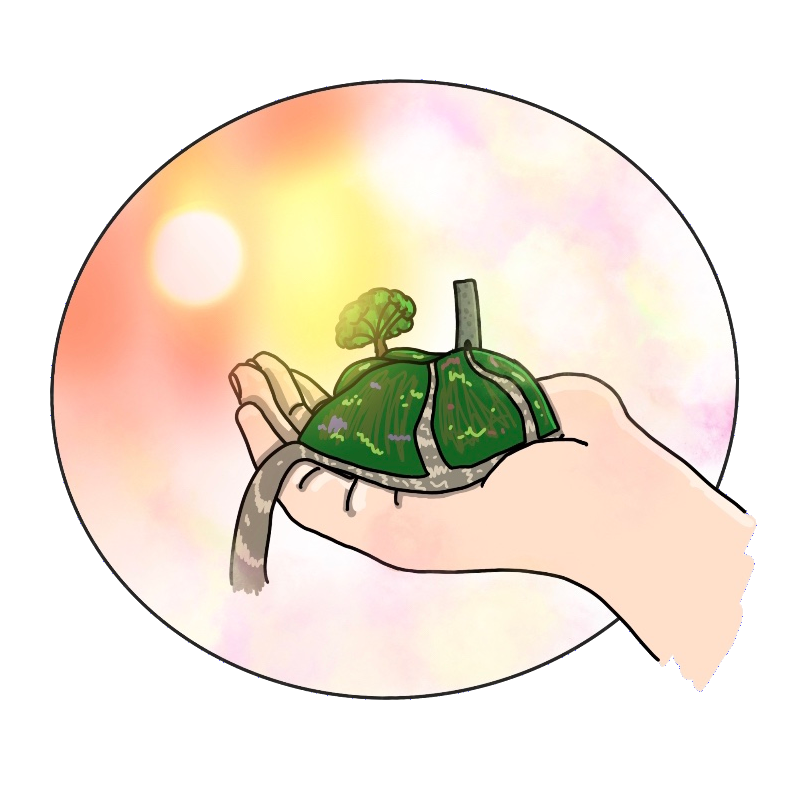 Troopers Hill 1995 to 2020
Troopers Hill 1995 to 2020


